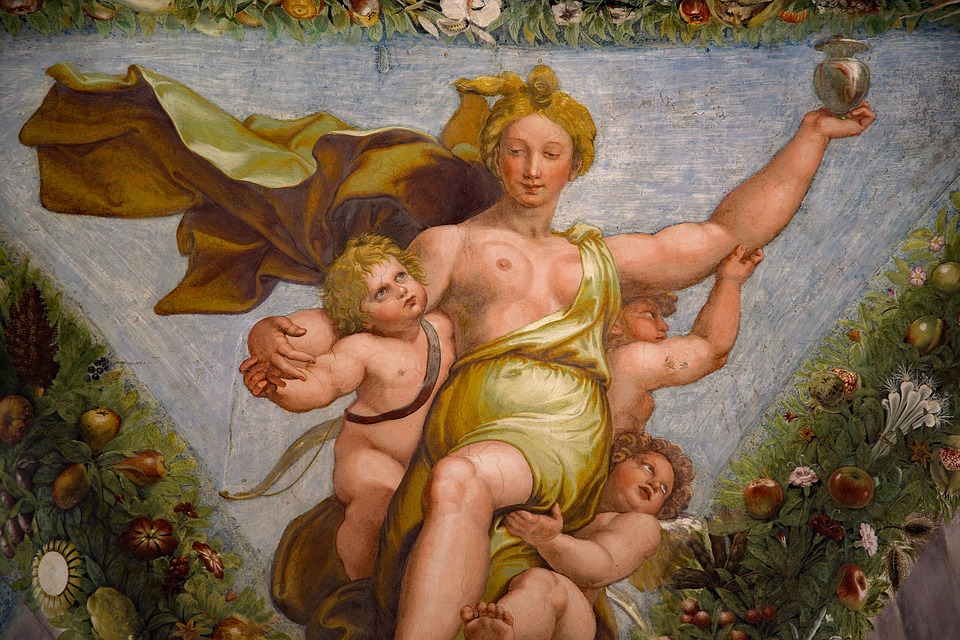Why do they ask you to write an essay on the Middle Ages and the Renaissance era?
For those who study art, it’s essential to learn about its evolution and gain insights into the cultural, religious, and philosophical shifts of its time. Today’s sample will demonstrate how to structure and format such essays to analyze that period and highlight the core differences in its artistic themes and techniques.
If you have no particular title prescribed for your Middle Ages and Renaissance art essay, try our college essay title generator to come up with relevant titles that reflect the focus of your assignment. If you crave more details beyond a title, consider using an essay prompt generator: It will provide creative ideas and speed up your writing process.
Please note: This sample can be an informative source to help you explore art history. It’s here for educational purposes only. We wouldn’t recommend that you copy-paste and submit it for the teacher’s review.
Compare the Main Ideas of Middle Age Art and Renaissance Art
Introduction
As well as any other sphere of human culture, art changes over time. All the stylistic periods are similar and different at the same time, as they are interrelated and connected with one essential element: human nature. Throughout history, artists worshiped and admired different concepts and ideas. Medieval artists focused their attention on religious themes, while Renaissance artists considered the human being to be the measure of all things.
Dark Ages: an Unfair Reference
Although the Middle Ages are commonly referenced as the “Dark Ages,” it would be unfair to underestimate the importance of Medieval art. Dr. Nancy Ross states that “the Middle Ages was not a time of ignorance and backwardness, but rather a period during which Christianity flourished in Europe. Christianity, and specifically Catholicism in the Latin West, brought with it new views of life and the world that rejected the traditions and learning of the ancient world.” Thanks to its wealthiness, the church sponsored many artists, and the clerics commissioned various pieces of art: paintings, ritual items, sculptures, and jewelry. Thus, the majority of Medieval artworks displayed the ideas of Catholicism.
The artists depicted the earthly life as a period full of suffering and sinful temptations. The main purpose of human existence was to devote oneself to God and hope for the eternal life in paradise. A human body was presented as a corruptible vessel for the immortal soul. Although the secular artworks were also numerously produced, they were not properly preserved and suffered more from loss and destruction.
The Rise of Humanism
In the 14th century in Italy, the rise of humanism began. Milan, Venice, Genoa, Rome, and Bologna were the centers of the Renaissance. This epoch left a glorious artistic heritage, including artworks by Leonardo da Vinci, Raphael, Botticelli, Michelangelo, Holbein, Durer, and many others. Although the Renaissance is known for the Mona Lisa, the sculpture of David, and The Sistine Madonna, the humanistic ideas had a significant impact on politic science, religion, and society in general.
The recovery of the Greco-Roman heritage from the East and the Byzantine examples imported to the West inspired artists to abandon the modestly scaled, abstracted representations of the Middle Ages in favor of monumental images that blatantly reflected their abilities (Zirpolo 11). Renaissance artists focused their attention and efforts to praise human abilities, talents, and bodies. They encouraged enjoyment of the earthly life and to explore the world and human nature. Geraldine A.
Johnson states that “Renaissance artists sought not only to imitate nature and evoke the Classical age, but actually to surpass them both. Indeed, competing with the prestige of antiquity and the reality of the natural world became a touchstone for some of the most self-consciously innovative art of the Renaissance” (50).
Conclusion
The Middle Ages cannot be considered as a period of decline in art. However, Medieval artworks were focused mostly on the religious themes and limited with the Catholic dogmas, while Renaissance art worshiped human beings and Antique traditions. It can be said that the ideas of humanism displayed in the artworks of the Renaissance appeared as opposed to the God-fearing philosophy of Medieval art.
Works Cited
Johnson, Geraldine A. Renaissance Art: A Very Short Introduction. Oxford University Press, 2005.
Ross, Nancy. “Introduction to the Middle Ages.” Khan Academy, Khan Academy, www.khanacademy.org/humanities/ap-art-history/early-europe-and-colonial-americas/ medieval-europe-islamic-world/a/introduction-to-the-middle-ages.
Zirpolo, Lilian H. Preface. Historical Dictionary of Renaissance Art. Scarecrow Press, 2008.
Get an Original Essay Sample from Our Talented Team
If you want to compose a stellar paper about art, we recommend you check our guide on how to write an argumentative essay; we promise you’ll find tons of practical and inspiring information there. Also, consider using an AI text detector when proofreading and editing your draft before submission; it will help you ensure that your work is authentic and insightful.
If you are willing to get a sample like the one above for personal use, please place your order at EssayShark. Our experienced writers can handle any topic and any discipline. Click the “Order” button and get the best result today!
